quarter three reading, unstacked
everything I read from July to September 2025
Sand between your pages. Using beach grass as an impromptu bookmark. These are the privileges of summer reading.
Since much of my time during the academic year is devoted to coursework-related readings and serious™ books that I should probably read before I graduate, summer is my dedicated fun reading time. This is the block of the year when I try to pick up books that have been long-awaited but somehow never read.
To celebrate the first month of school, I’m reminiscing on the fleeting months of the year in which my only reading obligations are the ones I set for myself. In previous years, I’ve posted a summer reading round-up at the end of August, but I’m trying out a quarterly wrap-up system that clusters July, August, and September into the third quarter of the year. I’m not sure how I feel about it yet, but bear with me as I try something new! To encapsulate the full range of reading that occurs between the beginning of July (beach, sun, sand) and the end of September (gentle, dappled golden light), I’m dedicating this unstack to the niche, ephemeral season of late-summer-to-early-fall and its associated transitional reading choices. (For more reflections and ramblings on this oft-ignored season, you can read my September postcard here.)
This unstack features six books that I enjoyed, and mentions two books that I also read. In honor of this being my quarter three unstack, I’m sorting these books into three categories: “get lost!,” “growing pains,” and “miscellaneous.” Curious about these categorizations? Read on, dear reader, read on!
get lost!
Stories that feature remote natural settings, lost hikers, exploration of new emotional and physical terrain, and characters that push past what they believed themselves to be capable of.
North Woods by Daniel Mason
2023 | 385 pages | historical fiction
my rating: ⭐️⭐️⭐️⭐️⭐️
If you’re seeking a chronologically expansive novel that assembles scraps of multiple genres— epistolary exchanges, colonial narratives, natural history records, and so on— into a cohesive fictional archive, let me be the first to suggest North Woods to you. Mason operates within a historical canon of his own creation, and the results are phenomenal. This novel will appeal to any reader who appreciates striking descriptions of natural phenomena and immersive storytelling. Find my full review here!
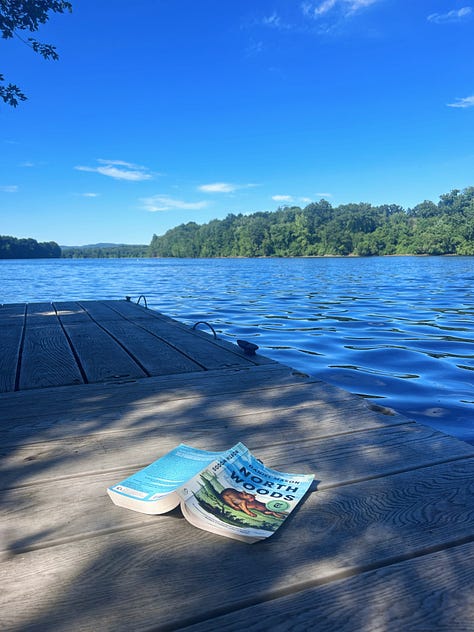
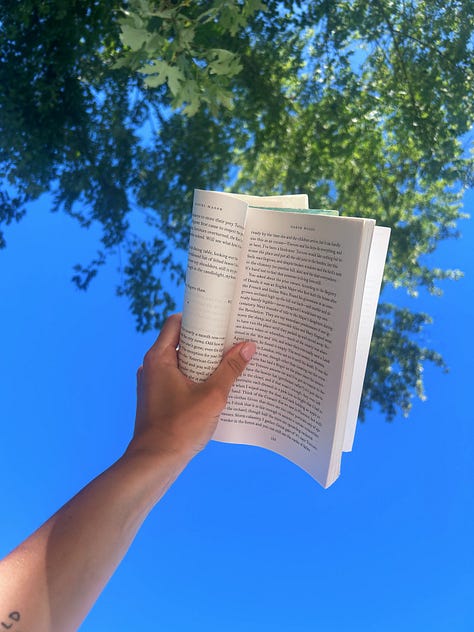

The Rich People Have Gone Away by Regina Porter
2024 | 343 pages | literary thriller
my rating: ⭐️⭐️⭐️⭐️
Porter’s long-awaited sophomore novel transports readers back to the beginning of the COVID-19 pandemic, when Theo Harper and his pregnant wife, Darla, abscond to their upstate New York cottage to wait out the lockdown back in the city. After an explosive argument erupts while the couple is out hiking, Darla disappears, leaving her family and friends to pick up the breadcrumbs, and her husband as the prime suspect.
While this novel is marketed as a thriller, it reads more like an in-depth character study. Similar to the modus operandi of her (incredible) debut, The Travelers, Porter prioritizes descriptive backstories and complex characterization to locate the characters within the narrative’s present-day situation. Relatedly, her training as a playwright shines through in her management of a large cast of characters and multiple settings across both of her published novels. Porter has quickly become one of my favorite authors; her writing could appeal to readers who appreciate in-depth characterization and chronological experimentation.
Heartwood by Amity Gaige
2025 | 320 pages | mystery/thriller
my rating: ⭐️⭐️⭐️⭐️ | recent release!
Heartwood is also a lost-hiker narrative that explores the consequences of COVID-19. Forty-two-year-old Valerie Gillis hits the Appalachian Trail to shake off the lingering effects of her tenure as a nurse during the pandemic. Everything is going to plan until she vanishes into the Maine wilderness, and an entire community must mobilize to find her. Among the searchers are Bev, a Maine game warden responsible for bringing her home safe, Lena, an unlikely septuagenarian armchair-investigator, and Santo, an AT through-hiker who split with Valerie shortly before her disappearance.
I loved how this novel explored the long-term mental and emotional impacts of the pandemic. Additionally, Gaige depicts a range of female characters that are strong and capable, but also nuanced and sensitive. This was particularly evident in her characterization of Lieutenant Beverly Miller, whose no-nonsense attitude often made me smile and kept me deeply invested in the warden’s search. This was my first time reading one of Gaige’s stories, but it certainly won’t be the last.
EDIT: I recently had the opportunity to interview the author of Heartwood about her nuanced female characters, research on the Appalachian Trail, and writing in New England. Find my interview with Amity Gaige here!
growing pains
Stories that explore the transformative nature of adolescence, the influence of spending time with loved ones, and what it means to grow up.
Sag Harbor by Colson Whitehead
2009 | 273 pages | lit fic/autofiction
my rating: ⭐️⭐️⭐️⭐️⭐️
It’s the summer of 1985, and fifteen-year-old Benji is leaving his elite Manhattan prep school behind for the comforting salt air of Long Island. As a member of Sag Harbor’s close-knit enclave of upper-middle-class African American professionals and their families, Benji’s experience is unexpected for those outside of the community— “we were the definition of paradox: black boys with beach houses,” he narrates. But for him, it’s just another summer, to (hopefully) be filled with glimpses of nudity, beach days, and misadventures alongside the other teenagers in the neighborhood. As Benji navigates adolescence, identity, and coming of age, it becomes clear that Whitehead has crafted something special.
I LOVED this book. Simultaneously sensitive and funny, Whitehead manages to capture the universal discomforts of teenagehood while transporting readers to a vivid and specific time period and location. The specificity of setting is a particular draw to this novel; it’s no surprise that Whitehead has deep ties to the Sag Harbor community and spent many of his own summers in the locales portrayed in his book. I would recommend this novel to anyone looking for an entry point into Whitehead’s work or those seeking a warm and funny take on the coming-of-age genre.
The Summer Book by Tove Jansson
1972 | 166 pages | unrated
Tove Jansson may be best known for her delightful Moomintroll series (a staple of my childhood), but she is also the author of this short, sweet collection of stories about a six-year-old girl and her grandmother’s life on an island in the Gulf of Finland. This read was wonderfully atmospheric, and The Summer Book’s Grandmother reminded me of my own Finnish grandmother. This book is so funny and sentimental, perfectly embodying the experience of growing up in a Finnish family. Loved it!
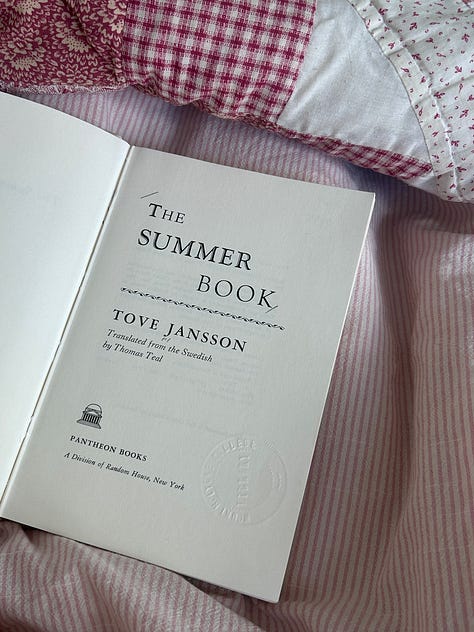

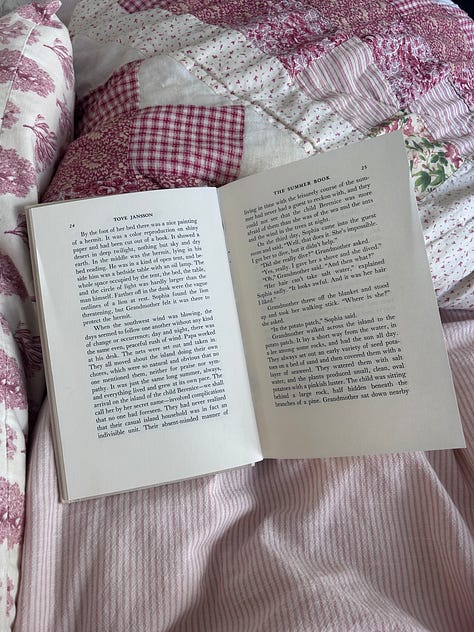
Franny and Zooey by JD Salinger
1957 | 201 pages | unrated
Salinger’s dedication of this book reads: “I urge my editor, mentor and (heaven help him) closest friend… to accept this pretty skimpy-looking book.” At 201 pages, this is a slim volume that packs a big punch. Focusing on the two youngest members of the fictional Glass family, Franny and Zooey was originally published as two separate short stories in The New Yorker. Franny is a pretty, intelligent college student on a date with her Yalie boyfriend; Zooey is her irreverent, brusque older brother. When Franny plunges into a spiritual reawakening, Zooey’s response illuminates the larger landscape of their dysfunctional family dynamic.
As serious as it is funny, this book offers a portrait of a family touched by tragedy and driven by love. Required reading for the Great American Literature folks.

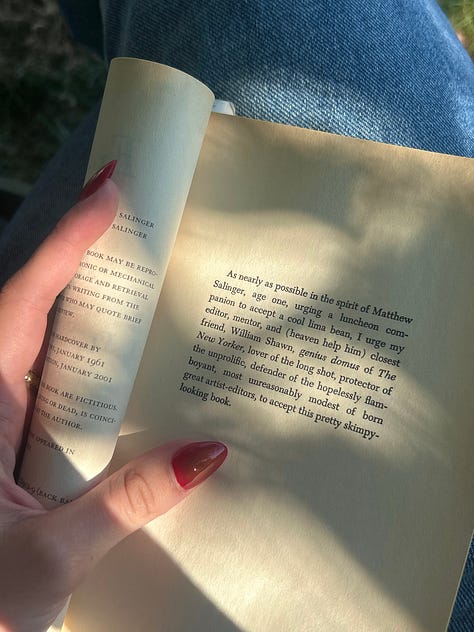

miscellaneous
Books that didn’t hit the spot for me, but might hit the spot for you.
Penance by Eliza Clark
2023 | 336 pages | crime/thriller
my rating: ⭐️⭐️⭐️.5
Penance is a twisty meta-fictional crime narrative told through a journalist’s contested, “true crime” account of events. This book is an interesting exploration of how truth and perspective are often at odds; the premise and set-up of this novel are incredibly clever, but the narrative itself dragged. For those seeking a book that explores the ethics and urges behind true crime, I would point to Jessica Knoll’s Bright Young Women as an alternative.
Where the Crawdads Sing by Delia Owens
2018 | 480 pages | historical fiction
my rating: ⭐️⭐️⭐️
I loved this book’s sense of place and the wonderfully detailed descriptions of the natural world. Unfortunately, the first hundred pages move at a snail's pace, and most of the dialogue felt contrived and unnatural. Additionally, I prefer novels with stronger characterization. All in all, I probably wouldn’t recommend it, although your local book club might.
I consider this summer to be a fruitful season of reading, as I picked up many books that have been sitting on my tbr and discovered some new favorites. Looking to the fall, I’m excited to try some new authors, genres, and generally revel in the literature of my favorite season. (Pssst— if you have a recommendation, I’d love to read it in the comments!) What books are you looking forward to?
I’d love to hear what YOU thought about these books. Did you love them? Hate them? Still haven’t gotten around to finishing them? No matter where you are in your reading journey, your thoughts are welcome. Leave a comment below. 💌




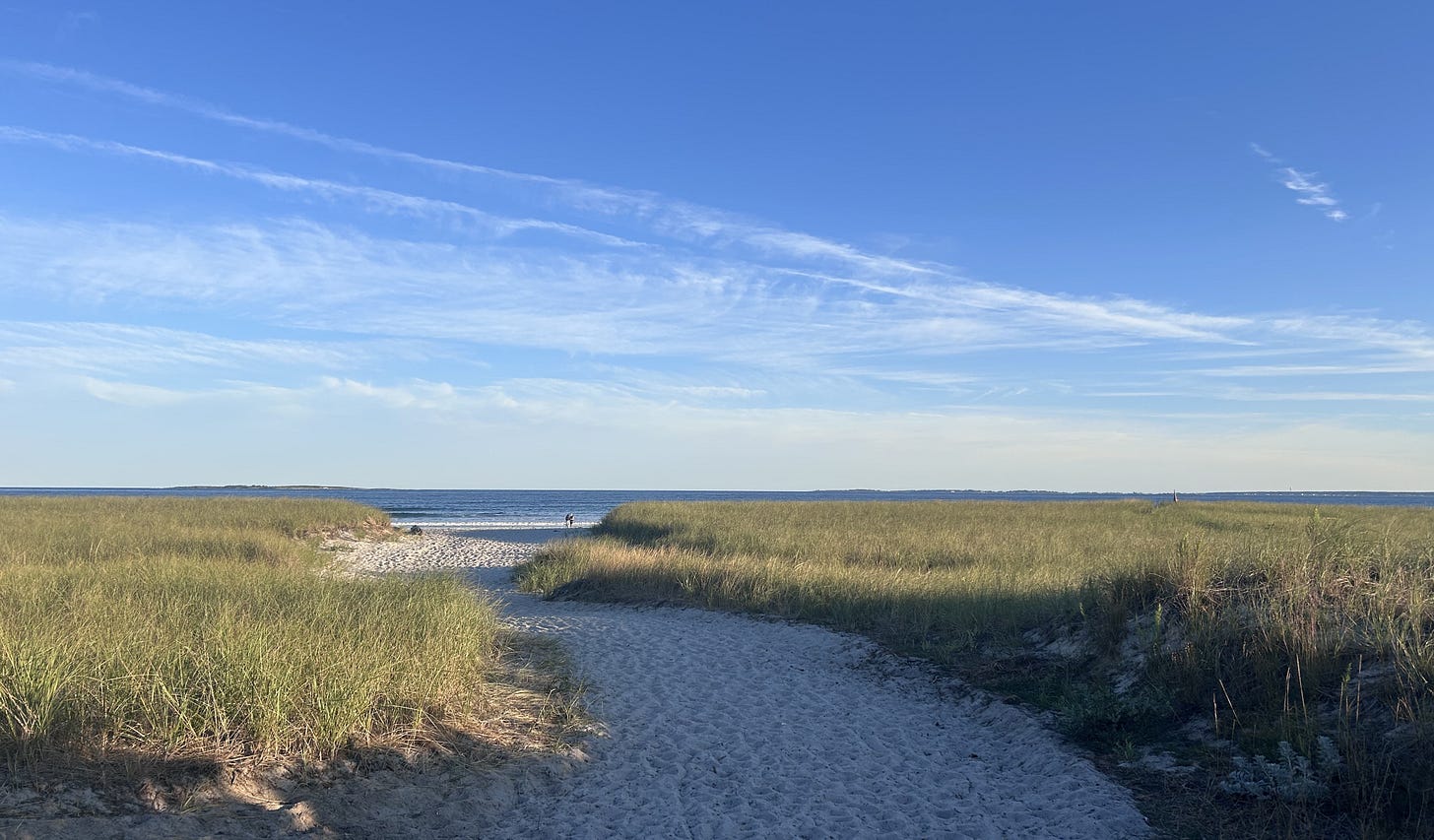




Familiar dock pictured… perfect reading spot !!
Thank you for these reviews! Sag Harbor by Colson Whitehead is going on my list — it sounds like the perfect read for me. The Summer Book is one of my favorites! Interesting that you didn’t rate it — is it beyond rating, or just tricky to rate? And with Where the Crawdads Sing, I felt the same and never quite got all the fuss.